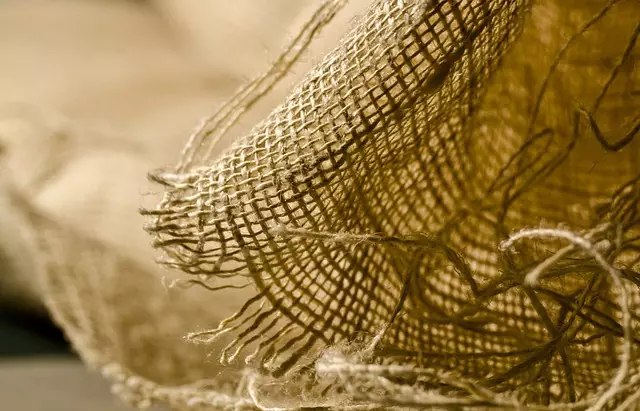Muscle soreness, particularly delayed-onset muscle soreness (DOMS), is a natural response to intense exercise that causes microtrauma in muscle tissues, leading to inflammation and pain. This physiological response triggers a healing process with distinct stages, culminating in the restoration of tissue function and potential improvements in strength or endurance. Recovery interventions including natural supplements like kratom and marijuana are being explored for their potential to manage muscle soreness. Kratom, derived from the Mitragyna speciosa tree, contains alkaloids that may offer pain relief and enhance well-being through opioid receptor interaction without the associated high. Marijuana, with components THC and CBD, provides anti-inflammatory and analgesic effects. Both substances have unique mechanisms of action for managing muscle soreness but should be used with caution due to varying legal statuses, potential side effects, and drug interactions. Users must weigh the benefits against the risks, consider the legal implications, and source safe, high-quality products when considering kratom or marijuana as part of their recovery strategy. The effectiveness of these substances can vary due to different cannabinoid profiles and the lack of extensive clinical studies on kratom, making informed decision-making with a healthcare professional's guidance essential for safe and effective pain management during muscle soreness recovery.
Muscle soreness after intense physical activity is a common experience, particularly among athletes and fitness enthusiasts. The recovery process from such exertion can be as critical as the exercise itself for maintaining health and performance levels. This article delves into the science behind muscle soreness, shedding light on its mechanisms, and explores the role of two natural substances—kratom and marijuana—in alleviating this discomfort. As we weigh Kratom vs marijuana use for pain management, it’s essential to understand their effects and considerations for safe and effective application in recovery strategies. Join us as we navigate the complexities of muscle soreness recovery and compare these remedies, providing valuable insights into managing post-exercise pain naturally.
- Understanding Muscle Soreness and Its Recovery Mechanisms
- Kratom's Role in Muscle Soreness Relief: Effects and Considerations
- Marijuana Use for Pain Management: Potential Benefits and Side Effects
Understanding Muscle Soreness and Its Recovery Mechanisms

Muscle soreness, often referred to as delayed-onset muscle soreness (DOMS), can occur after intense physical activity or exercise that the body is not accustomed to. This phenomenon is a natural response to microtrauma in muscle tissues and can be accompanied by inflammation and pain. Understanding the mechanisms behind muscle soreness is crucial for effective recovery. The body’s healing process involves several steps, including inflammation, which initially aggravates the condition but is necessary for repair and adaptation. This inflammatory phase is followed by a proliferative stage where new cells grow and the tissue begins to heal. Finally, the remodeling phase takes place, where the repaired tissues are restored to their functional state, potentially resulting in increased strength or endurance.
When exploring interventions for muscle soreness recovery, various natural supplements have garnered attention, such as kratom and marijuana. Kratom, derived from the Mitragyna speciosa tree, contains alkaloids that may help manage pain and promote a sense of well-being, potentially aiding in the recovery process. On the other hand, marijuana use has been associated with anti-inflammatory properties and analgesic effects due to its active components like THC and CBD. Both substances have unique mechanisms of action that could influence muscle soreness recovery; however, it’s essential to approach their usage responsibly and within legal and medical guidelines. Users should consider the potential side effects, interaction with other medications, and adherence to local laws when considering these options for recovery from muscle soreness.
Kratom's Role in Muscle Soreness Relief: Effects and Considerations

Kratom, a mitragynine-containing plant from Southeast Asia, has garnered attention for its potential analgesic properties, which may contribute to muscle soreness relief. Unlike marijuana, kratom’s primary alkaloid, mitragynine, interacts with opioid receptors in the brain and spinal cord, offering pain-relieving effects. Users often report that kratom helps alleviate discomfort associated with muscle strain or fatigue, which is particularly beneficial for those recovering from intense physical activities. However, it’s crucial to approach the use of kratom with caution; while it may offer relief from soreness, its long-term effects and regulatory status vary by region, necessitating careful consideration and adherence to local laws.
When comparing kratom to marijuana for muscle soreness, one must consider the distinct pharmacological mechanisms and psychoactive profiles of each substance. Marijuana contains a variety of cannabinoids, such as THC and CBD, which can also provide pain relief but may impair cognitive function due to their psychoactive nature. In contrast, kratom typically does not induce intoxication in the same way, making it a potential option for those seeking pain relief without significant mind-altering effects. Nonetheless, both substances should be used responsibly, and individuals considering their use for muscle soreness recovery should consult with healthcare professionals to understand the implications and to ensure they are using a safe, high-quality product. Additionally, users should be aware of the potential for both substances to interact with other medications and the importance of dosage to avoid adverse effects.
Marijuana Use for Pain Management: Potential Benefits and Side Effects

Muscle soreness can be a significant impediment to recovery, particularly for individuals engaging in intense physical activities or those with chronic pain conditions. Marijuana use has been increasingly explored as a potential therapeutic option for managing pain. The active components in marijuana, known as cannabinoids, may interact with the body’s endocannabinoid system, which plays a role in pain regulation. While some studies suggest that marijuana could offer benefits for pain relief, it’s important to consider the distinction between marijuana and kratom, another substance sometimes used for similar purposes. Unlike marijuana, kratom is not widely studied in clinical settings, making its effects on pain management and recovery less predictable. Users of both substances should be aware that while they may alleviate pain, they can also produce side effects such as dizziness, lethargy, and cognitive impairment. Additionally, the legal status of kratom varies by jurisdiction, further complicating its use for recovery.
When considering marijuana for pain management, individuals should weigh the potential benefits against the possible side effects and legal considerations. Cannabis has been reported to offer relief from various types of pain, including muscle soreness, without the opioid-related risks of addiction or overdose. However, it’s crucial to approach its use responsibly, adhering to local laws and dosage guidelines to minimize adverse effects and optimize recovery outcomes. Users should also consider that marijuana’s impact on pain may vary depending on the strain, concentration of cannabinoids, and individual physiology. Conversely, kratom has gained popularity as an alternative due to its alkaloid profile, which includes mitragynine and 7-hydroxymitragynine, but its regulatory status remains uncertain, impacting availability and safety. Both substances should be used with caution and ideally under medical supervision to ensure safe and effective recovery from muscle soreness.
Muscle soreness, a common experience among those who engage in physical activity, can hinder recovery and overall well-being. This article has elucidated the mechanisms behind muscle soreness and emphasized the importance of understanding its origins for effective recovery strategies. Both Kratom and marijuana have been explored for their potential roles in alleviating pain associated with muscle soreness, offering users alternatives to consider. While Kratom is known for its stimulating and analgesic effects, marijuana use presents its own set of benefits and side effects that can influence pain management decisions. Ultimately, individuals should approach both substances with caution, consult healthcare professionals, and weigh the pros and cons based on their unique circumstances. A holistic recovery plan encompassing proper rest, nutrition, hydration, and potentially these alternative remedies, may facilitate a more efficient return to full strength and peak performance for those experiencing muscle soreness.






